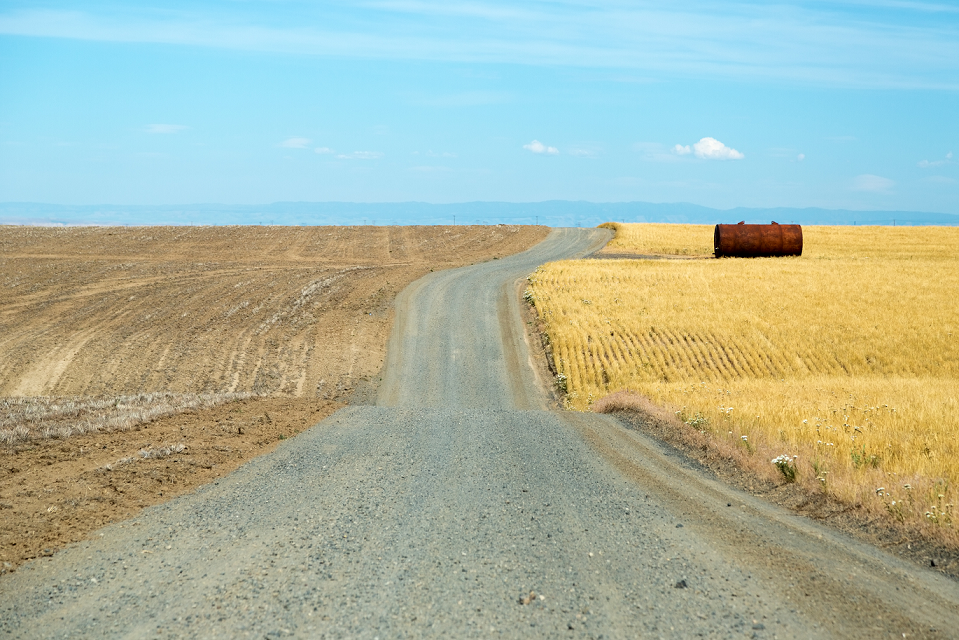Ecocentricity Blog: Thirsty Lands
By: John A. Lanier

Ecocentricity Blog: Thirsty Lands
Warning. Warning. Math incoming. Seek shelter immediately.
But first, a map. Click here for a handy website I found where you can select various states you’ve visited. When you click the link, you’ll see that I have selected Texas, New Mexico, Arizona, and the ten other states to the north of them. No, I haven’t traveled to all of these states – I grouped them together to make a point. When you add up the total land area of these 13 states, it totals 895.3 million acres. That’s a lot of real estate.
Now compare that to the 900.2 million acres of farmland in the United States, according to the most recent Census of Agriculture conducted by the USDA. They’re pretty close to the same acreage. So in other words, when you look at the map I linked above, it represents essentially all of the farmland in our country.
But this math storm ain’t over quite yet. Now focus in on just the three westernmost states - Arizona, Utah, and Idaho. They form about 20% of the total acreage of the 13 states I grouped, clocking in at a combined 180.8 million acres. Compare that number to the 182.7 million acres of crops in the United States that are experiencing a drought right now, according to the National Integrated Drought Information System (NIDIS). So when you look at those three states, you’re looking at how many acres of farmland in our country are currently in a drought. In a word, it’s huge.
In case you haven’t noticed, it’s the western part of the United States that is feeling thirsty right now. The combination of high temperatures and less rain than usual has been brutal, and the scariest part is that there is no end in sight. According to NIDIS’s forecast, the drought is projected to persist in the vast majority of the affected regions for the rest of July.
This is bad news for all people living out west, but it’s being felt particularly hard by the farmers. Last week, the New York Times published a story that focused in on California farmers. Some rice farmers are choosing to sell their water rights rather than actually watering a crop on their land. An almond farmer is ripping out his trees and considering putting solar panels on the land instead.
While such stories are anecdotal, I’m pretty confident they represent challenges that are being felt at scale. And we have a sense of what “at scale” can mean when we look at historical precedents – from NIDIS again: “In 2015, drought impacts to California’s agricultural sector resulted in $1.84 billion in direct costs, a loss of 10,100 seasonal jobs, and surface water shortages of 8.7 million acre-feet.”
Almost certainly, we will see food prices increase this year as a result of this drought. In that respect, this will be a drought that is felt nationwide. Moreover, as the climate crisis deepens, we should expect droughts to become more frequent, creating more and more strain on agriculture in particular, and society in general. It’s yet another example of how our changing climate isn’t just a future problem, but a now problem too.
This blog is available weekly via email subscription. Click here to subscribe.
RELATED BLOGS:
Ecocentricity Blog: What if I Told You
Ecocentricity Blog: Beetles, Mussels and Diatoms, Oh My!
Ecocentricity Blog: A Drink with Leonardo
CONTACT:
Valerie Bennett
+1 (770) 317-5858
valerie@raycandersonfoundation.org
Ray C. Anderson Foundation
http://www.raycandersonfoundation.org
Facebook: https://www.facebook.com/RayCAndersonFoundation
LinkedIn: https://www.linkedin.com/company/ray-c.-anderson-foundation
Twitter: @RaysLegacy
Instagram: @rcafoundation

